LL87/09 Energy Audit & Retro-commissioning
See IGP’s LL87 Energy Audit & RCx Project Case Studies
Local Law 87/09 Energy Audit & Retro-commissioning requires New York City buildings over 50,000 square feet every ten (10) years to complete an ASHRAE Level II energy audit and retro-commissioning or “tune-up” of their base building systems (i.e. building envelope, boilers, furnaces, HVAC, elevators, escalators, domestic hot water, electrical and lighting systems).
LL87/09 Law and Rules were amended as of 6/26/2019.
Do you know the Due Date for your required energy audit and retro-commissioning?
It depends on the last digit of your NYC Tax Block number. How do you find your tax block number?
LL87/09 – Energy Efficiency Report Due Dates
| Last Digit of Block # | 0 | 1 | 2 | 3 | 4 | 5 | 6 | 7 | 8 | 9 |
| Report Due by 12/31 of | 2020 | 2021 | 2022 | 2013 | 2014 | 2015 | 2016 | 2017 | 2018 | 2019 |
What is “the 4-year rule”?
- the Energy Audit and Retro-commissioning must be completed within 4 years of filing the EER (i.e. so the work is not “stale”)
- avoid not being able to raise your low score for several years because of the 4-year rule. (i.e. buildings on Tax Blocks ending in 2 can’t start the work until 2018, (i.e. 2022 – 4 = 2018) but your low benchmarking score is publicly disclosed in 2012 or 2013)
Energy Efficiency Report (EER) is the combined Energy Audit & Retro-commissioning (RCx) Reports submitted together.
The LL87/09 Energy Audit must include:
- evaluation of potential energy upgrades, including initial cost and annual energy savings
- examination of all building systems: envelope, heating, ventilation and A/C, roofing, domestic hot water (DHW), lighting and electrical, elevators and escalators, motors and pumps
- building systems located in tenant spaces owned and maintained by owner (i.e. heating, central air, water)
- results in an Energy Audit Report

During the LL87 examination we measured the temperature of the domestic hot water in the sinks. Under NYC Code the temperature of DHW cannot exceed 140 F degrees. This building was in compliance.
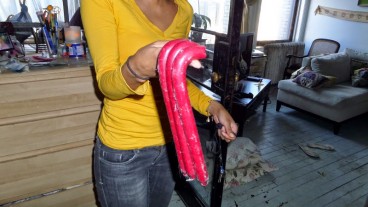
LL87/09 – Energy Audit – Tenant shows candles that melted because her apartment was so over-heated in the winter.
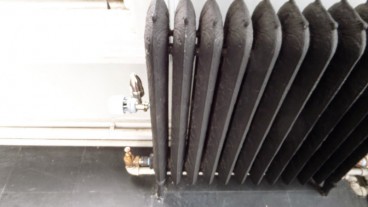
AFTER : LL87/09 Radiator is retrofit with a new Danfoss Air Vent and TRV.
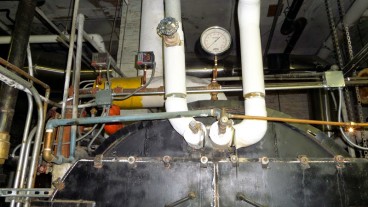
AFTER: LL87/09 – Retro-commissioning – boiler steam pipes are insulated
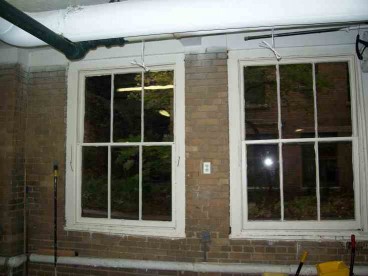
LL87/09 – Energy Auditor may recommend replacing the wood framed single pane windows in basement which contribute to the building’s stack effect and heat loss.
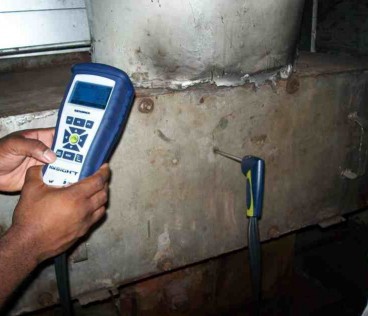
LL87/09 – Energy Auditor will use a combustion analyzer to test the boiler’s combustion efficiency.
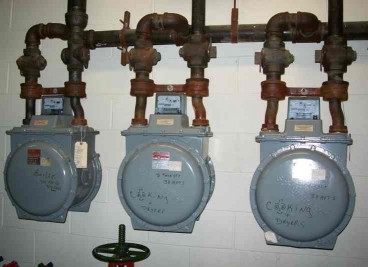
LL87/09 – Energy Auditor will analyze the aggregate gas and electricity bills.
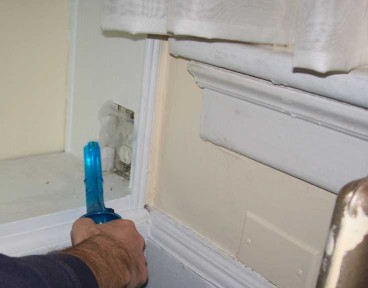
LL87/09 – Energy Auditor uses a smoke stick to check if air infiltration is coming through the electric outlets.

LL87/09 – Energy Auditor will recommend sealing exterior wall holes left by workmen to prevent heat loss.
Under LL87/09 Retro-commissioning your building must comply with the list of 28 building operations measures including:
Operating protocols, calibration and sequencing of:
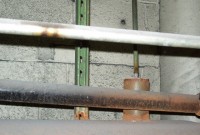
LL87: Replace broken boiler feed tank float switch, which wastes energy and risks condensate tank corrosion.
- Heating, Ventilation and Air Conditioning (HVAC) temperature and humidity set points and setbacks
- HVAC sensors
- HVAC controls
- Load distribution
- Ventilation rates
- System automatic reset functions
- Adjustments to oversized or undersized equipment
- Simultaneous cooling and heating
- HVAC system economizer controls
- HVAC distribution balancing
- Light Levels
- Lighting sensors and controls
- Domestic hot water heater temperature settings
- Water pumps
- Water leaks
Cleaning and repairs:
- adjusting equipment, controls and sensors to improve performance
- Filter cleaning and replacement
- Light fixture cleanliness
- Operating condition of motors, fans and pumps
- Steam trap repair or replacement
- Manual override remediation
- Boilers tuned for optimal efficiency
- Pipe insulation
- Sealants and weather stripping

LL87/09 – Energy Auditor may leave wireless temperature data loggers in different apartments to measure the effectiveness of heat distribution throughout the building.

LL87/09 – Energy Auditor uses the Dwyer Smoke Gage Comparison Chart to determine boiler’s combustion efficiency.

LL87-09 – Energy Auditor will examine the integrity of the tubes inside the building’s scotch marine boiler.

LL87/09 – Energy Auditor may recommend installing high efficiency gas-fired DHW heaters and storage tanks to save energy in summer months.

LL87/09 – Steam Traps: Energy Auditor will recommend replacing the element of broken steam traps.

LL87/09 – Energy Auditor verifies proper functioning of the modulating damper that regulates air flow in the boiler breeching.
